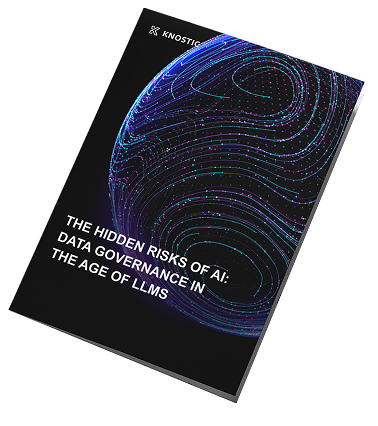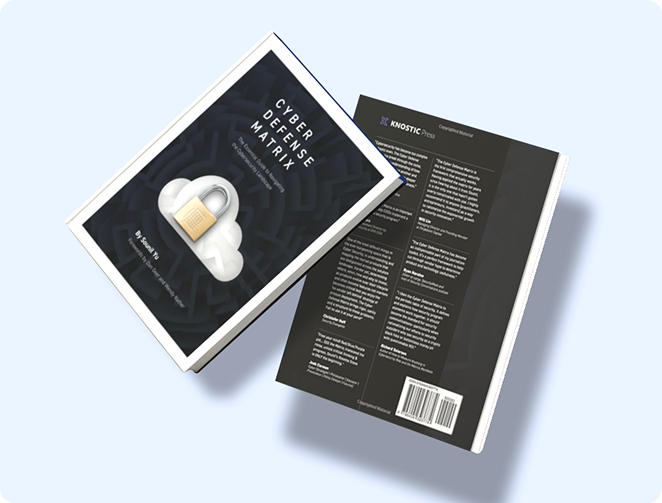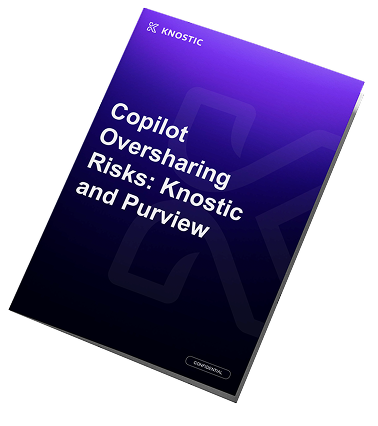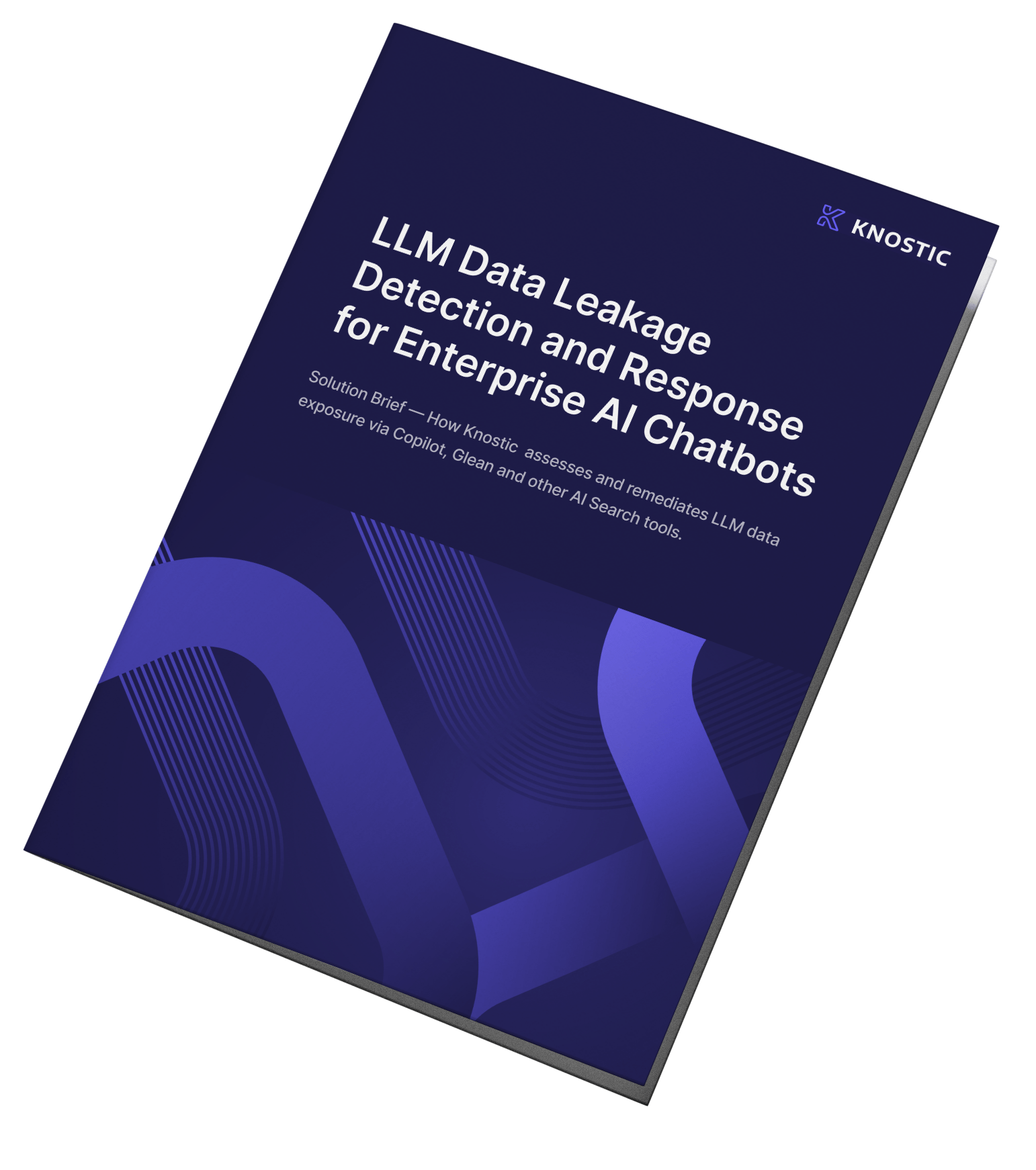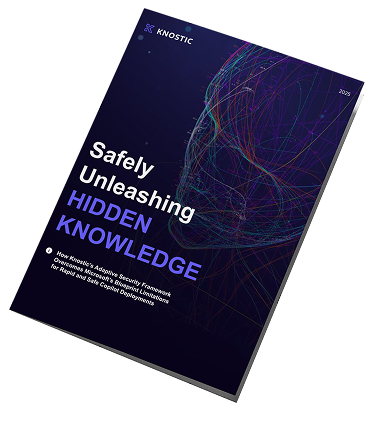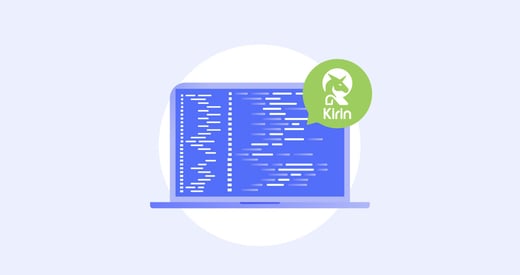Key Findings on AI Data Poisoning
-
AI data poisoning is the intentional manipulation of training or retrieval data to mislead or degrade AI model performance. It has become a top security risk for LLM systems, and it’s flagged by frameworks such as NIST and Google’s SAIF.
-
Generative AI systems are especially vulnerable because they rely on fast-changing, large-scale datasets that can silently ingest poisoned inputs at any stage.
-
Attack methods include label flipping, backdoor triggers, clean-label poisoning, and availability attacks, all designed to corrupt model behavior while evading detection.
-
Prevention strategies include rigorous data validation, trusted sourcing, continuous model monitoring, red-team simulations, provenance tracking, and policy-based access controls across the AI lifecycle.
-
Knostic mitigates poisoning threats by enforcing governance and integrity at the knowledge layer, monitoring inference in real time, tracing data lineage, and stopping manipulated prompts or unsafe retrievals before model generation.
What is AI Data Poisoning?
AI data poisoning means someone changes the data that trains or grounds a model so the model learns the wrong things. It targets the integrity of datasets used in pre-training, fine-tuning, retrieval-augmented generation (RAG) corpora, or embeddings. Security bodies list training data poisoning as a top risk for LLM applications today. This risk is defined in widely used security lists and frameworks.
The U.S. National Institute of Standards and Technology (NIST) also flags data poisoning as a core cybersecurity risk for generative AI systems. Google’s Secure AI Framework (SAIF) explains that poisoning can happen before ingestion, during storage, or during training.
How Data Poisoning in AI Works
An attacker adds, alters, or removes data so the model absorbs hidden patterns or biased signals. The change can be tiny yet still shift outcomes, making attacks difficult to spot. Poisoning can plant triggers that activate only under specific inputs, or it can slowly degrade accuracy across topics. It can target public web sources that later feed a training run, or private corpora that ground RAG pipelines. Security catalogs describe these techniques and document where they hit the AI lifecycle.
Guidance from Google SAIF and OWASP explains the risks for agentic systems, autonomous AI tools capable of making decisions, retrieving information, or executing tasks without constant human input, as well as for RAG, and tuning pipelines.
Why It Matters for Generative AI
GenAI depends on extensive and fast-changing corpora, so bad sources can spread quickly and quietly. Poisoned inputs can lead to incorrect answers, unsafe behavior, or biased outputs that harm users and brands. Regulators and security agencies warn that integrity failures create compliance and safety risks across sectors. Because of this, enterprise programs need controls that watch data usage, not just files in storage.
While traditional observability focuses on tracking system performance metrics, latency, and errors, it does not explain why an AI model produced a specific output or how a particular source influenced that output. Explainability, by contrast, connects data lineage and decision logic, which are needed in generative AI, where poisoned data may not cause visible errors but can distort reasoning or retrieval patterns. Without explainability integrated into AI observability, organizations detect anomalies too late, after the poisoned data has already shaped model behavior. Explainability includes identity-aware access, continuous AI monitoring, and audit trails that explain how a response was formed from specific sources.
Types of AI Data Poisoning Attacks
AI data poisoning has several clear forms that map to attacker goals. Label-flipping attacks change class labels, leading a model to learn false boundaries. Backdoor attacks embed a hidden trigger so the model behaves normally until the trigger appears. Clean-label attacks keep labels “correct” while nudging features to evade manual review. Availability attacks aim to degrade performance across the board by corrupting enough samples. Integrity attacks focus on a single class or behavior while leaving average accuracy largely intact. Security bodies and frameworks describe these categories to guide controls across the AI lifecycle.
The following table compares the major attack types, illustrating their objectives, primary methods, and showing why detection is difficult in real-world systems:
|
Attack Type |
Primary goal |
Typical method |
Detection challenge |
|---|---|---|---|
|
Label-flipping |
Misleading classification by swapping correct labels |
Intentionally mislabel a subset of training data |
Hard to detect when mislabeled samples resemble valid noise |
|
Backdoor attack |
Insert hidden triggers that alter predictions under specific inputs |
Embed small, unique patterns (e.g., pixels or tokens) tied to an alternative label |
Triggers activate rarely, remaining invisible during regular validation |
|
Clean-label attack |
Introduce poisoned data that looks legitimate |
Modify input features without changing labels |
Evades manual review since data appears correctly labeled |
|
Availability attack |
Degrade the performance or reliability of the entire model |
Inject large volumes of corrupted or random data |
Performance loss may be gradual and misattributed to data drift |
|
Integrity attack |
Target one class or domain without global degradation |
Manipulate specific class features or task outputs |
Accuracy metrics remain high overall, masking localized failures |
This comparative view highlights how even minor manipulations can distort models in ways that standard validation pipelines or anomaly detectors fail to reveal. Including these distinctions clarifies that robust defense requires lifecycle-wide provenance, not just accuracy monitoring.
Examples of AI Data Poisoning
The following examples showcase how clean-label backdoors and tainted corpora can seed hidden behaviors across research benchmarks, generative AI training, RAG, and everyday enterprise assistants.
Data Poisoning in AI Research
Research undertaken at the Massachusetts Institute of Technology shows that attackers can poison data while evading simple filters. Their clean-label backdoor studies prove that triggers can be inserted without changing labels. To human reviewers, they appear to be “reasonable” samples, yet the model learns a secret behavior. Later, a small visual or textual cue can flip predictions on demand. These attacks illustrate integrity risks even when average accuracy seems stable. Security taxonomies use these studies to define threat classes and to align defenses. NIST’s Adversarial Machine Learning (AML) taxonomy groups poisoning by stage, objective, and attacker capability to drive consistent controls.
Data Poisoning in Generative AI
Generative systems inherit the same risks but at a larger scale and speed. Web-scale pre-training can ingest polluted content that is difficult to trace later. Fine-tuning and instruction updates can also serve as injection points. RAG amplifies problems when retrieval prefers tainted documents. Guidance emphasizes provenance and monitoring, as manual inspection is not feasible. Furthermore, security frameworks warn that poisoning can occur before ingestion, during storage, or during training. Enterprises should treat these stages as separate control points with distinct checks.
In an enterprise setting, poisoning can occur through everyday collaboration tools. Imagine a corporate Slack bot or CRM assistant that learns from user messages and uploaded files. A malicious insider or compromised account could inject misleading text snippets or manipulated attachments into shared channels. Over time, these poisoned samples could cause the assistant to generate false financial summaries or expose sensitive data during client interactions. This scenario mirrors research findings but demonstrates how poisoning exploits user-generated content pipelines in real organizations.
How to Prevent AI Data Poisoning
Treat data like code. Verify what you ingest, trace its origins, observe how it behaves in production, and tightly control who can change it.
Data Validation Pipelines
Data validation should be automated and repeatable. Schema checks and statistical tests can reveal shifts that signal tainted inputs. Outlier detection can flag rare patterns tied to triggers or mislabeled items. Cross-split audits help spot label inconsistencies and data leakage. Validation must run before training and again after merges or refreshes. Security catalogs recommend integrating these checks into the ML lifecycle, not as an afterthought. Documented validation raises confidence and speeds incident response when anomalies appear.
Practical tools and methods for implementing validation include:
-
Schema validation with Great Expectations or TensorFlow Data Validation
-
Statistical drift detection using Evidently AI or Deepchecks
-
Outlier and anomaly detection with the scalable Python toolkit, PyOD or integrated scikit-learn modules
-
Automated data quality pipelines orchestrated through Airflow or Prefect
Including these tools in continuous CI/CD pipelines enables teams to automatically enforce data integrity checks at every model update or dataset merge.
Source Trustworthiness
Prioritize curated and version-controlled sources over unvetted public feeds. Use datasets with clear licenses, stable releases, and changelogs. Mirror and checksum critical corpora so that later drift is detectable. Limit fine-tuning to sources with owners you can contact and verify. Treat crowdsourced contributions as untrusted until validated. Google’s security guidance urges strong provenance because compromised sources can cascade through training and RAG. This approach reduces exposure to upstream manipulation.
Continuous Monitoring
Models should be watched in real time for integrity issues. Track accuracy, calibration, and surprising failure clusters after deployments. Alert on sudden performance drops tied to specific prompts, classes, or triggers. Compare live outputs against holdout “canary” prompts designed to detect hidden backdoors or model tampering. Record prompts, retrievals, and tool calls to trace anomalies. Modern frameworks emphasize observability because manual review does not scale in GenAI. Monitoring closes the loop between training controls and production safety.
Red-Team Simulations
Simulations help prove whether defenses work. Seed small poisoned subsets and confirm that validation flags them. Test backdoor triggers across modalities and token patterns. Attempt label flipping within controlled sandboxes and measure detection latency. Combine poisoning with model changes to mimic real lifecycle events. Use results to tune thresholds and to prioritize fixes with the highest risk reduction. Structured red-teaming aligns with guidance to exercise AI systems under realistic attack pathways.
Provenance Tracking
Track lineage from raw source to final artifact. Apply cryptographic hashes to snapshots and training shards. Store metadata about collection time, preprocessing, and approval steps. Capture which datasets influenced each model version and embedding index. Make this lineage queryable during incident response and audits. Google’s guidance on AI supply chain security stresses provenance because poisoning can occur before data even reaches storage. Strong provenance allows quick rollback and targeted retraining.
A practical approach involves creating cryptographic “snapshots” of datasets and model artifacts using Git repositories with SHA-256 hashing. Each dataset version, preprocessing script, and trained model can be commit-tracked with a unique hash that guarantees integrity. When combined with tools like open-source Data Version Control (DVC), teams can reconstruct full lineage trees, showing exactly which data subsets contributed to a given model checkpoint. This approach not only ensures reproducibility but also enables rapid isolation of poisoned versions during audits or incident response.
Policy Integration
Policy should gate who can add, modify, or approve datasets. Tie roles and approvals to CI/CD so unauthorized changes cannot proceed. Require peer review and sign-off for high-impact data merges. Map controls to the stages defined in public security frameworks. Align storage access, training jobs, and RAG indexing with least privilege. Keep audit trails that show who changed what and when. External frameworks recommend aligning technical controls with AI governance practices so integrity does not depend on manual best efforts.
How Knostic Helps Prevent Data Poisoning
Knostic monitors LLM interactions and retrieval behavior to surface anomalies indicative of poisoned or manipulated content. Pre-production prompt simulation with real access profiles exposes risky inference chains before rollout.
At the knowledge layer, runtime PBAC extends RBAC to evaluate persona, purpose, sensitivity, and provenance at the prompt, retrieval, tool, and output levels. Access is gated pre-inference, and outputs can be redacted or blocked, with complete inference lineage and audit records for rapid triage.
Signals are used to detect poisoning threat classes before they can affect LLM applications. Skewed or trigger-like retrieval patterns, anomalous usage spikes, and suspect source provenance are correlated in a lineage graph that ties users, permissions, and content, enabling targeted remediation alongside DSPM and data-validation pipelines.
Zero-trust principles verify every prompt, retrieval, and tool call. Continuous posture reviews cover models, connectors, and agents. Integrations with Entra/Okta and Purview/MIP drive policy context. Security Information and Event Management (SIEM) and Security Orchestration, Automation, and Response (SOAR) exports, plus Microsoft 365 coverage, reduce integrity risk without disrupting workflows.
FAQ
- What is data poisoning in AI?
Data poisoning occurs when manipulated or compromised information infiltrates model training or retrieval pipelines, leading to unreliable or unsafe outputs.
- How can you spot data poisoning?
Anomalous retrievals, abnormal prompt behavior, or inconsistent model outputs are typical signs.
- What is a data poisoning AI example?
A manipulated financial report or client data file containing incorrect or manipulated data becomes available through an enterprise AI assistant. When the assistant uses this source in its response, the output reflects the corrupted information.







